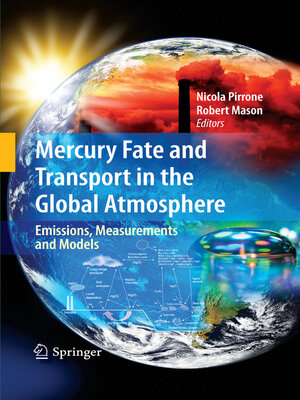Mercury Fate and Transport in the Global Atmosphere
ebook ∣ Emissions, Measurements and Models
By Nicola Pirrone

Sign up to save your library
With an OverDrive account, you can save your favorite libraries for at-a-glance information about availability. Find out more about OverDrive accounts.
Find this title in Libby, the library reading app by OverDrive.



Search for a digital library with this title
Title found at these libraries:
| Loading... |
Mercury, primarily because of its existence and bioaccumulation as methylmercury in aquatic organisms, is a concern for the health of higher trophic level organisms, or to their consumers. This is the major factor driving current research in mercury globally and in environmental regulation, and is the driver for the current UNEP Global Partnership for Mercury Transport and Fate Research (UNEP F&T) initiative. The overall focus of the UNEP F&T report is to assess the relative importance of different processes/mechanisms affecting the transfer of mercury (Hg) from emission sources to aquatic and terrestrial receptors and provide possible source-receptor relationships. This transfer occurs through atmospheric transport, chemical transformations and subsequent deposition, and involves the intermittent recycling between reservoirs that occurs prior to ultimate removal of Hg from the atmosphere. Understanding the sources, the global Hg transport and fate, and the impact of human activity on the biosphere, requires improved knowledge of Hg movement and transformation in the atmosphere. An improved understanding of Hg emission sources, fate and transport is important if there is to be a focused and concerted effort to set priorities and goals for Hg emission management and reduction at the national, regional and global levels; and to develop and implement such policies and strategies. To achieve this, a series of coordinated scientific endeavors focused on the estimation of sources, measurement and validation of concentrations and processes, and modeling, coupled with interpretation of the results within a policy framework, is likely to be required.






